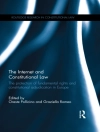How often do you hear, ‘The only parents who showed were the parents who didn’t need to be here.’
But how often do you consider time of day, lack of child care, cost of dinner, transportation, language of the presentation, even relevance of the topic—all real-world barriers for families of our historically underserved students.
Here at last is a resource that will open up access and reveal all-new ways to forge more culturally inclusive partnerships with families and communities . . . partnerships that extend well beyond parent-teacher conferences, PTA meetings, and the occasional bake sale.
The two big services Equity Partnerships provides? Using the Tools of Cultural Proficiency, you’ll
We know inherently that family and community engagement is critical to the success of our students. Let Equity Partnerships be your go-to tool for breaking down the walls that for too long have limited all of us.
‘Raising the next generation is a shared responsibility and privilege. These authors have been first responders for decades by promoting Cultural Proficiency as a means to ensure equity and access for all. In Equity Partnerships, they identify the powerful and critical link of family, school, and community engagement to strengthen families, build community support, and increase student success.’
–TRUDY ARRIAGA, Associate Dean for Equity and Outreach, California Lutheran University, and Coauthor of Opening Doors
Cuprins
FOREWORD BY TRUDY T. ARRIAGA
ACKNOWLEDGMENTS
ABOUT THE AUTHORS
Introduction
PART I. THE BASICS OF CULTURAL PROFICIENCY AND ENGAGEMENT
CHAPTER 1. The Cultural Proficiency Framework: Tools for Family, School, and Community Engagement
Overcoming the Barriers to Cultural Proficiency
The Guiding Principles of Cultural Proficiency
The Cultural Proficiency Continuum
The Essential Elements of Cultural Proficiency
The Family, School, and Community Engagement Rubric
Going Deeper Reflection
Going Deeper Dialogic Questions
Summary
Looking Ahead: Chapter 2
CHAPTER 2. The Why of Engagement
Changing Times and Terminology
Informed by Related Studies: From Strain to Inclusion
What Parents Want to Know and What Parents Want Educators to Know
Benefits of Partnering for All
Family and Community Engagement and Link to Student Achievement
Culturally Proficient Leadership and Engagement
A Moral Imperative and Shared Responsibility for Creating Culturally Proficient Engagement
Our Why
Going Deeper Reflection
Going Deeper Dialogic Questions
Summary
Looking Ahead: Chapter 3
CHAPTER 3. The Moral Imperative for Partnerships: Historical, Legal, and Educational Policy Contexts
Family, School, and Community Engagement Has Evolved Over Time
Twentieth Century and Beyond
Federal and State Court Decisions and Legislative Actions That Foster Family, School, and Community Partnerships
Educational Rationale for Family, School, and Community Engagement
Importance of Educational Research in Building Family, School, and Community Engagement in Diverse Communities
Going Deeper Reflection
Going Deeper Dialogic Questions
Summary
Looking Ahead: Chapter 4
PART II. EMBRACING TO ENGAGE
CHAPTER 4. How Cultural Proficiency Intersects With Family Engagement
Alignments
Cultural Proficiency’s Guiding Principles Provide a Moral Base for Essential Elements
Using Our Assets of Moral Authority, Reflection, and Dialogue
Guiding Principles of Cultural Proficiency: Surfacing Our Assumptions, Beliefs, and Values
Being Intentional in Valuing Students’ Cultures as Assets
Valuing Leads to Doing
Constantino’s Five Simple Principles
Dual Capacity-Building Framework
Dialogic Questions
Summary
Looking Ahead: Chapter 5
CHAPTER 5. The 7 Cs of Engagement
Collaboration
Communication
Caring
Culture
Community
Connectedness
Collective Responsibility
Going Deeper Reflection
Going Deeper Dialogic Questions
Courageous Engagement
Summary
Looking Ahead: Chapter 6
PART III. FROM MARGINALIZATION TO INCLUSION
CHAPTER 6. Barriers to Family, School, and Community Engagement
Barriers to Cultural Proficiency
Barriers to Family, School, and Community Engagement
Author’s Analysis
Using the Family, School, and Community Engagement Rubric
Author’s Analysis
Using the Family, School, and Community Engagement Rubric
Author’s Analysis
Using the Family, School, and Community Engagement Rubric
Author’s Analysis
Using the Family, School, and Community Engagement Rubric
Going Deeper Reflection
Going Deeper Dialogic Questions
Summary
Looking Ahead: Chapter 7
CHAPTER 7. The Guiding Principles Foster Essential Elements as Educator and School Action
From Barriers to Constructive Action
Essential Elements
Essential Elements
Essential Elements
Essential Elements
Going Deeper Reflection
Going Deeper Dialogic Questions
Summary
Looking Ahead: Chapter 8
PART IV. COMMIT TO ACTION
CHAPTER 8. The 8th C—Commit to Action
Building Family and Community Capacity
Using Pre-assessments to Get Started
Planning to Plan
From Negative to Constructive
Your Cultural Proficiency Family, School, and Community Engagement Action Plan
Components of a Culturally Proficient Family, School, and Community Engagement Plan
Summary
Looking Ahead: Chapter 9
CHAPTER 9. Resources: Culturally Proficient Planning for Inclusive Partnering and Capacity Building
Resources: Inclusive Partnering and Capacity Building Learning Strategies
Academic Parent-Teacher Teams (APTT)
Parent/Family Universities
Community-Based Organizing Efforts
Resources: Technology Supported Strategies
Resources: Practical Learning Strategies
Summary
Be Intentional About It
RESOURCE A: BOOK STUDY GUIDE
RESOURCE B: CULTURAL PROFICIENCY BOOKS’ ESSENTIAL QUESTIONS
RESOURCE C: AUTHORS, ORGANIZATIONS, AND WEBSITES
REFERENCES
INDEX
Despre autor
Cynthia L. Jew, Ph.D. is a professor at California Lutheran University in Thousand Oaks, CA. Dr. Jew teaches in the Counselor Education program focusing on Field Experiences and School Systems as she prepares School Counselors. She is co-author of Culturally Proficient Inquiry: A Lens for Identifying and Examining Education Gaps (Corwin, 2008) and Culturally Proficient schools: All means All. (Corwin 2017) She also serves as a consultant to the Santa Clarita Valley International Charter schools focusing on the areas of Student Support and Inclusiveness. She is a Licensed Psychologist and Certified School Psychologist. She has two daughters, Kiera and Jordyn, who is Deaf and wears Cochlear Implants.












